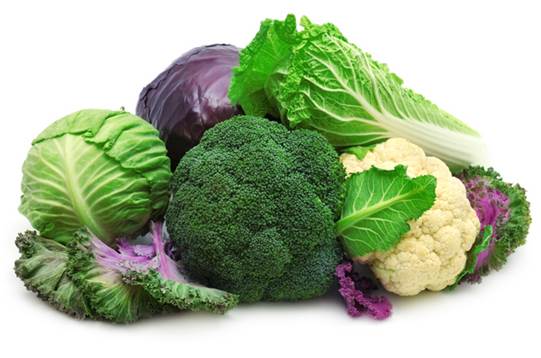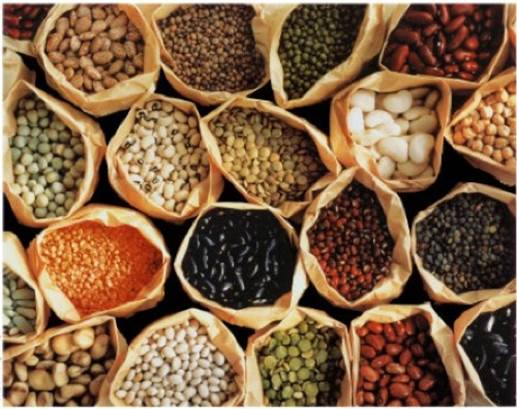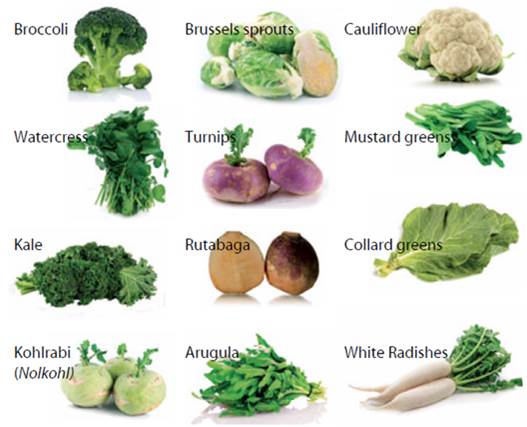The Power Of
Crucifers (Part 1)
So you
think cabbage and cauliflower taste ugh! Find out why research says these
humble veggies are nutritional superstars and how you can learn to love them.
Ask any meat lover what veggies they’d go
for, given a choice, and more likely than not, the answer would be potatoes,
tomatoes, peas and maybe, carrots. Alas, the lowly crucifers – viz. cabbage,
cauliflower, nolkol et al – languish at the bottom of the most favored list.
Actually there could be a scientific reason for this lack of enthusiasm:
Researchers have discovered that people who have two copies of a certain gene
are very sensitive to the bitter taste of glucosinolate-containing vegetables
such as the crucifers.

So
you think cabbage and cauliflower taste ugh! Find out why research says these
humble veggies are nutritional superstars and how you can learn to love them.
(This may have some evolutionary
implications since such taste receptor genes may have helped early humans avoid
toxic plants, which are often bitter).
But there are some excellent reasons to
train your taste buds to appreciate these humble veggies.
Most of us begin to feel more anxious about
our health after we hit 40. We know, for example, that we should get more
calcium to ward off osteoporosis. And as we age, we are at higher risk for
cancer, heart disease, high blood pressure, diabetes, and arthritis.
To hedge our bets, we may pop a daily
multivitamin. But an increasing body of evidence to suggest that may not do the
trick. “Food should always be your first choice for optimal nutrition,” says
Felicia Busch, a spokesperson for the American Dietetic Association (ADA) and
the author of The New Nutrition: From Antioxidants to Zucchini. “Every day
scientists are learning that foods offer more than just calories, vitamins, and
minerals. All the beneficial substances have not even been identified yet, but
it’s foolish to think that supplements can reliably mimic nature’s bounty. A
bad diet with supplements is still a bad diet”.
Food is Medicine

Food
is Medicine
A substantial amount of research shows that
people who eat a plant-based diet – mainly fruits, vegetables, whole grains,
and legumes – live longer and enjoy better health than people whose diets
consist mainly of animal-based foods like meat. Many cultures developed their
cuisines around plant foods out of necessity. Traditionally, animal protein was
expensive, so limited quantities were available. Indian diets, as well as other
Asian, Mediterranean and Latin American cultures are known for pairing healthy
plant foods with lean protein (fish, chicken) and monounsaturated fat (olive,
sesame, groundnut oils, nuts). A Mediterranean-style diet has been found
responsible for:
- Longer life expectancy
- Reduced heart disease
- Relief from rheumatoid
arthritis
- Lower rates of Parkinson’s
disease
- Lower rates of Alzheimer’s
disease
Florets for the heart
“One of the first steps in the development
of atherosclerotic plaque in blood vessels is the oxidation of LDL
cholesterol”, explains Susan B., MS, RD, assistant director of the UCLA Center
for Human Nutrition. “In terms of inflammation, a chronic, low-grade
inflammatory state in the body is believed to set the state for cardiovascular
disease, so any food that has anti-inflammatory properties would be beneficial
in reducing systemic, low-grade inflammation”.
Antioxidant compounds, such as those found
in cruciferous vegetables, provide antioxidant defense and help to limit the
oxidation of LDL, “which is a critical first step,” says B.. Cruciferous
vegetables are rich sources of compounds called sulforaphanes, which act as
antioxidants and anti-inflammatories in the body. These two effects are of
particular importance with respect to heart disease. A Chinese study looking at
total vegetable intake, total fruit intake, and cruciferous vegetable intake
found that high intakes of total vegetables, particularly the cruciferous
vegetables, were associated with a significantly reduced risk of death,
particularly death due to cardiovascular disease.
You’ve got some brass (ICA)!
Cruciferous vegetables, also referred to as
Brassica vegetables, are members of the cabbage family. They include:

Cabbage (including Chinese cabbage and bok choy)
Consuming more plant foods also means you
will be getting more phytonutrients in your diet. Phytonutrients are found only
in plant foods, and include carotenoids, flavonoids, phytoestrogens, phenols,
saponins, sulfides and thiols. “Some of these may help the body produce nitric
oxide, which is a vasodilator and can help to reduce blood pressure,” says B.
A diet high in fruits and vegetables is
also nutrient dense but not calorie-dense, so it can help control body weight.
That’s important, since overweight and obesity are risk factors for heart
disease.
“Also, plant foods are excellent sources of
dietary fiber. And soluble fiber (found in certain plant foods, including
broccoli and cauliflower) helps to lower serum cholesterol levels, which also
reduces the risk for heart disease”, says B.
Bringing up broccoli
Broccoli is a nutrition champion. Like
other cruciferous vegetables in the Brassicaceae family, it’s rich in vitamin
C, folate (a B vitamin), and fiber, plus potassium, vitamin K, and beta
carotene. One cup (85 gm, raw, chopped) has about as much vitamin C as a
medium-sized orange. And all for only 30 calories per cup. Broccoli sprouts,
the edible young shoots from broccoli seeds, are even richer in sulforaphane,
gram for gram. Two small studies suggested that eating them along with broccoli
will boost sulforaphane absorption more than eating either food alone. On the
other hand, broccoli sprouts have lower levels of other potential anti-cancer
compounds, and they lack the full range of nutrients and fiber found in
broccoli.
Buying & cooking

Look
for fresh broccoli with tight florets that are dark green or purplish, not
yellow